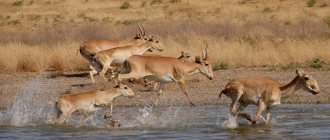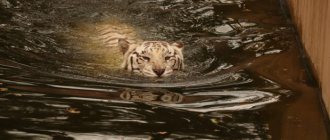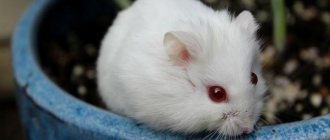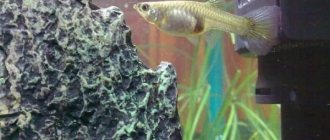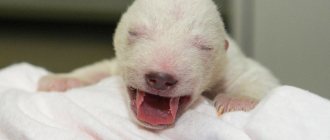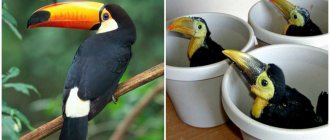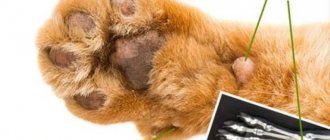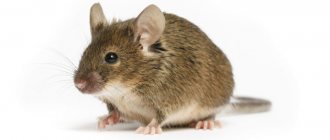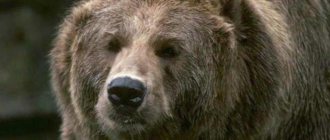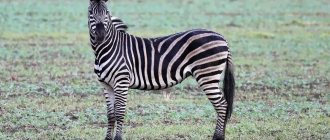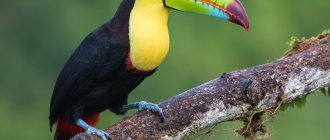Savannah is similar to the steppe, but there can be full-fledged forests here. Depending on the area, the climate can be either tropical or continental. Most savannas have high average annual temperatures and rare precipitation. Some areas are subject to seasonal rains, when several months' worth of precipitation falls on the ground.
Given the very favorable conditions for life, savannas are distinguished by a rich fauna. Here you can find a lion, rhinoceros, hippopotamus, ostrich and many other animals and birds. Perhaps the most famous representatives of these territories are giraffes and elephants.
Flora of Africa
North Africa
Africa, located above the equator, is almost all on the Sahara Plate. The relief is a system of plateaus and plateaus with erosion pits that arose in this part of the continent in time immemorial. Before talking about the plants of North Africa, you need to clearly understand that in the summer in this part of the continent it can reach up to 60 degrees Celsius with oh, “cold” winters - from 15 to 30 degrees Celsius.
Plants have evolved to grow in such conditions. Two subregions can be distinguished: the desert-tropical Sahara and the savannas of Sudan. About 1.2 thousand plant species have adapted to live in such extreme conditions - it is objectively clear that these are xerophytes and ephemerals; with rare exceptions, representatives of other species can be found.
South Africa
But South Africa is very special and more welcoming. More and more new plant species are taking root in this part of the continent, and now, for example, flowering plants - there are already more than 24,000 species. All of Europe together cannot compete with such diversity; this is almost 10% of the world's plants of this type.
The most favorable for them is a strip 200 kilometers wide on the coast of the South-West of South Africa (vector - from West (Clanwilliam) to East (Port Elizabeth). The Cape flora kingdom, which has a unique species composition, spreads over an area of 5.5 thousand square kilometers plants.
There is no such concentration of so many plant species in a tiny area anywhere in the world. The flora of tropical rainforests stood nearby. For example, near Cape Town (Table Mountain) there are 1.5 thousand plant species in 60 square kilometers.
Crocodile
The animal world in Africa is particularly diverse. Predators live not only on land, but also in water. One of the most dangerous predators on the continent are crocodiles. These large predators spend almost all their time in the water. They come to the surface to soak up the sun's rays in the morning and evening.
Photo: glavred.info: UGC
After birth, reptiles grow rapidly. Within 3 years, individuals reach one and a half meters in length. At the age of three, the growth rate decreases. Further, the predator grows by only a few centimeters per year. The total lifespan of a reptile reaches 100 years. Sexual maturity in a predator occurs at 9–10 years.
The main food product is fish, but reptiles consume any game that they can overcome. Crocodiles eat mammals, crustaceans, aquatic birds, worms, fish, reptiles, mollusks, amphibians and even insects. They can eat carrion. Many species of reptiles are cannibals, devouring smaller and weaker members of their own species.
Climatic conditions and soils
Savannahs are characterized by a subequatorial and tropical climate. According to its geographical location, the savannah zone is located between two tropics - parallels located at a distance from the equator, where the sun reaches its zenith. The phenomenon can be observed during the solstice. The temperature rises sharply, it becomes very hot and a large amount of water evaporates from the seas and oceans, which leads to heavy rains.
In the savannah there is no traditional division of the year into winter, spring, summer and autumn. In hot zones, nature provides a special plan that divides the year into rainy and dry periods.
The dry season, winter, lasts from November to April. The air temperature fluctuates around 21 degrees, and there is little precipitation. At this time, one can observe mass migrations of animals in search of water and food, and the savanna begins to somewhat resemble a desert.
The rainy season, summer, lasts from May to October. At this time it rains every day, mainly in the afternoon. Many animals breed in the summer because the survival rate of offspring increases.
Savannah is also rich in soils. They develop on ancient continental planation surfaces in a climate zone with an annual precipitation of 400–500 mm. Main types of soils:
- Red-brown.
- Brown tropical subarid.
- Black tropical. Blackening occurs due to the special bond between clay and organic matter.
The soils are rich in iron, calcium, magnesium, sodium, and humus. The most fertile lands with black soil are in Africa.
Vegetation of the continent
The distribution of African flora is closely related to three main biomes - deserts, savannas and forest zones. The vegetation of Africa is most studied in its southern regions; less known species grow in other areas.
Tropical deserts are located in the north and southwest of the continent. Despite the very arid climate, there is vegetation adapted to harsh conditions. The following varieties are typical for this area:
- Articulated barnacle is a succulent that has a bare, articulated stem.
- Spiny spurge is an evergreen shrubby plant with thorns.
- Mesembryanthemum is a representative of desert flora with succulent thick leaves and small flowers.
- Tamarinds and acacias are the most common species.
- Date palms grow near bodies of water, forming oases.
- Ephemera are annual plants. They begin to grow immediately after the soil is moistened.
The subequatorial zone of savannas is characterized by herbaceous vegetation with small groups of shrubs and single-growing trees. There are many legumes and thorny flora representatives here. The most common tree growing in the steppe zone is called baobab. It has a large smooth trunk with branches growing at the top and is long-lived.
Rain forests cover the equatorial regions of the continent and are represented by a variety of flora - from small herbaceous plants to tall trees. Epiphytes and various vines, including berries, grow here. An interesting plant, the strangler ficus, is a parasite that entwines tree trunks and feeds on their sap. Bright flowers and ferns grow on the lower tier.
Rare species
The African continent is home to the most ancient varieties of flora. The greatest variety of forms is found in areas with a subequatorial climate, as well as the island of Madagascar, closest to the continent. Flora grows here that is not found anywhere else on the planet. Among them there are predators, parasites, bright and discreet species with amazing characteristics. Among them:
- African Hydnora;
- lithops;
- wolfia;
- corpulent spurge.
Gidnora is an insectivorous species, distinguished by the bright color of its flower and its specific external structure, reminiscent of a mushroom. Emits the smell of rotting organic matter, which attracts carrion insects. With the help of the root system, it attaches itself to other plants, receiving nutrients.
The stem and leaves of lithops resemble stones, among which these plants grow. During the autumn season, flowers open with yellow, white or pink petals. For camouflage purposes, characteristic patterns are formed on the leaves, merging with the environment.
In the western and northern regions there is a very rare plant - wolfia. It has no roots or leaves, and its miniature stems live on the surface of reservoirs. Flowering is rare and the flowers are considered the smallest in the world.
The fat spurge or Euphorbia obesa is a perennial succulent with a spherical shape. It does not have spines or leaves, but instead forms peculiar sucker branches. Small flowers emit a pleasant aroma and attract honey insects.
National parks
Nature protection zones have been established in most countries of the continent. Due to the agricultural activities of the local population, the animal and plant world of Africa is losing its most valuable and rare species. The list of known protected areas:
- Serengeti in Tanzania.
- Maasai Mara in Kenya.
- Chobe in Botswana.
- Kruger in South Africa.
Environmental problems caused by the growth of industry, poaching, and deforestation are forcing environmentalists to close off particularly sensitive areas from human intervention. A message about the wildlife of the African continent for children studying in primary school should touch upon factors that are destructive to animals and plants, as well as measures taken to preserve the unique biosphere of the continent.
Animals of the Australian savannah
Australian savannas are typically characterized by open woodlands of eucalyptus trees. Casuarinas, acacias and bottle trees also grow in the steppes of the continent. The latter have expanded, like blood vessels, trunks. Plants store moisture in them.
Dozens of relict animals roam among the greenery. They make up 90% of Australia's fauna. The continent was the first to separate from the single continent of antiquity Gondwana, isolating the bizarre animals.
Ostrich Emu
Like the South American rhea, it is not related to ostriches, although it is similar in appearance to Africans. In addition, the flightless birds of Africa are aggressive and shy. Emus are curious, friendly, and easy to tame. Therefore, they prefer to breed Australian birds on ostrich farms. So it’s difficult to buy a real ostrich egg.
Slightly smaller than the African ostrich, the emu takes 270cm strides. The speed developed by the Australians is 55 kilometers per hour.
Dragon of Komodo Island
The large reptile was discovered in the 20th century. Having learned about a new species of lizards, the Chinese, obsessed with the cult of the dragon, flocked to Komodo. They mistook the new animals for fire-breathing animals, and began killing them to make magical potions from the bones, blood, and sinews of dragons.
Monitor lizards from Komodo Island were also destroyed by farmers who settled the land. Large reptiles attacked domestic goats and pigs. However, in the 21st century, dragons are protected and are listed in the International Red Book.
Wombat
It looks like a small bear cub, but in fact it is a marsupial. A wombat is one meter long and can weigh up to 45 kilos. With such a mass and compactness, the bear cub looks short-legged, however, it is capable of reaching a speed of 40 kilometers per hour.
The wombat not only runs briskly, but also digs holes in which it lives. The underground passages and halls are spacious and can easily accommodate an adult.
Ant-eater
Long and narrow muzzle. Even longer tongue. Lack of teeth. This is how the anteater adapted to extract termites. The animal also has a long and prehensile tail. With its help, the anteater climbs trees. The tail serves as a rudder and grabs branches when jumping.
The anteater clings to the bark with long, powerful claws. Even jaguars are afraid of them. When a 2-meter ant stands on its hind legs, spreading its clawed front legs, the predators prefer to retreat.
The Australian anteater is called a numbat. There are subspecies living in Central America. Regardless of the continent where anteaters live, their body temperature is 32 degrees. This is the lowest rate among mammals.
Echidna
Outwardly it resembles a cross between a hedgehog and a porcupine. However, the echidna has no teeth and the animal’s mouth is very small. But tropical animals of the savannah stand out with a long tongue, competing with the anteater for food, that is, termites.
The lower mammal is monotreme, that is, the reproductive tract and intestines are connected. This is the structure of some of the first mammals on Earth. Echidnas have been around for 180 million years.
Lizard Moloch
The reptile's appearance is Martian. The lizard is painted in yellow-brick tones, covered in pointed growths. The reptile's eyes are like stone. Meanwhile, these are not guests from Mars, but animals of the savannah.
The indigenous Australians nicknamed Moloch the Horned Devils. In the old days, human sacrifices were made to the strange creature. In modern times, the lizard itself can become the victim. It is included in the Red Book.
The Moloch lizard reaches 25 centimeters in length. In moments of danger, the lizard appears larger because it can swell. If someone tries to attack Moloch, turn the reptile over, its spines cling to the soil surrounding the plants.
Dingo dog
He is not an indigenous inhabitant of Australia, although he is associated with it. The animal is considered a descendant of feral dogs brought to the continent by immigrants from Southeast Asia. They arrived in Australia about 45 thousand years ago.
The dogs that escaped from the Asians chose not to seek shelter from humans anymore. There was not a single large placental predator in the vastness of the continent. Foreign dogs have filled this niche.
Dingoes are usually about 60 centimeters tall and weigh up to 19 kilograms. The physique of a wild dog resembles a hound. At the same time, males are larger and denser than females.
Opossum
On its tail there is a tassel of wool, like a jerboa. The pompom's hairs are black, like the rest of the marsupial's cover. Having been born as such, it is better to be a female. Males die after the first mating. Females do not kill partners like praying mantises, this is simply the life cycle of males.
Animals of the Australian savannah climb trees standing in the steppes. Tenacious claws help. At higher elevations, the rat catches birds, lizards, and insects. Sometimes the marsupial encroaches on small mammals, fortunately, its size allows it.
Marsupial mole
Deprived of eyes and ears. The incisors protrude from the mouth. The paws have long, spade-shaped claws. This is what a marsupial mole looks like at first glance. In fact, the animal has eyes, but they are tiny, hidden in the fur.
Marsupial moles are miniature, not exceeding 20 centimeters in length. However, the dense body of underground savannah inhabitants can weigh about one and a half kilograms.
Kangaroo
The choice of a partner in a population is somewhat similar to human interests. Female kangaroos choose beefier males. Therefore, males take poses similar to those shown by bodybuilders at performances. By flexing their muscles, kangaroos assert themselves and look for their chosen ones.
Although the kangaroo is a symbol of Australia, some individuals end up on the tables of its residents. As a rule, the indigenous population of the continent eats marsupial meat. Colonizers disdain kangaroo meat. But tourists are showing interest in it. How can you visit Australia and not try an exotic dish?
Australia's savannas are the greenest. The most dry steppes are the steppes of Africa. The middle option is the American savanna. Due to anthropogenic factors, their areas are shrinking, depriving many animals of places to live. In Africa, for example, many animals live within national parks and are almost exterminated outside their “fences.”
Animals of the American Savannas
American savannas are primarily grasslands. There are also a lot of cacti there. This is understandable, because steppe expanses are typical only for the southern continent. Savannahs are usually called pampas here. Querbacho grows in them. This tree is famous for the density and strength of the wood.
Jaguar
In America, he is the largest cat. The length of the animal reaches 190 centimeters. The average jaguar weighs about 100 kilograms.
Among cats, the jaguar is the only one that cannot roar. This applies to all 9 species of predator. Some of them live in North America. Others are animals of the savannahs of South America .
Maned wolf
More like a long-legged fox. The animal is red, with a sharp muzzle. Genetically, the species is transitional. Accordingly, the “link” between wolves and foxes is a relic that has managed to survive millions of years. You can meet a maned wolf only in the pampas.
The height of a maned wolf at the withers can be up to 90 centimeters. The predator weighs approximately 20 kilograms. Transitional features can be seen literally in the eyes. With a seemingly fox-like face, they are wolf-like. Red cheaters have vertical pupils, while wolves have normal pupils.
Puma
He can “argue” with a jaguar which animals in the American savannah are the fastest. The puma picks up speed at 70 kilometers per hour. Representatives of the species are born spotted, like jaguars. However, as they mature, cougars “lose” their markings.
When hunting, cougars overtake victims in 82% of cases. Therefore, when faced with a one-color cat, herbivores shake like an aspen leaf, even though there are no aspens in the savannas of America.
Armadillo
It has a scaly shell, which makes it stand out among other mammals. Among them, the armadillo is considered inferior. Accordingly, the animal roamed the planet millions of years ago. Scientists believe that it was not only their shell that helped armadillos survive, but also their pickiness in food. Savannah inhabitants feed on worms, ants, termites, snakes, and plants.
When hunting snakes, armadillos press them to the ground, cutting them with the sharp edges of the plates of their shell. By the way, it folds into a ball. This is how armadillos escape from offenders.
Vizcacha
This is a large South American rodent. The length of the animal reaches 60 centimeters. Vizcacha weighs 6-7 kilograms. The animal looks like a large mouse-rat hybrid. The color of the viscacha is gray with a white belly. There are also light marks on the rodent's cheeks.
South American rodents live in families of 2-3 dozen individuals. They hide from predators in holes. The passages are distinguished by wide “doors” of about a meter.
Ocelot
This is a small spotted cat. The animal is no more than a meter long and weighs 10-18 kilograms. Most ocelots live in the tropics of South America. However, some individuals settle in the pampas, finding areas with trees.
Like other cats of the South American savannas, ocelots lead a solitary lifestyle. Cats meet with their relatives only for mating.
Nandu
It is called the American ostrich. However, the overseas bird belongs to the order of rheas. All birds entering it call “nan-doo” during mating. Hence the name of the animal.
The fauna of the savannah is decorated with rheas in groups of about 30 individuals. Males in families are responsible for building the nest and caring for the chicks. The rheas disperse to build “houses” in different “corners” of the savannah.
Females move from nest to nest, mating with all the males in turn. The ladies also lay their eggs in different “houses”. One nest can accumulate up to 8 dozen capsules from different females.
Tuco-tuco
“Tuko-tuko” is the sound made by the animal. His small eyes are “turned up” almost onto his forehead, and his small rodent ears are buried in the fur. Otherwise, the tuco-tuco is similar to a bush rat.
The tuco-tuco is somewhat more massive than the bush rat and has a shorter neck. The animals do not exceed 11 centimeters in length and weigh up to 700 grams.
Lions
The main predator of the savannah, the king of beasts well known to all of us, is a beautiful and formidable lion. He poses a danger to almost all inhabitants of the places where he lives.
These predators prefer to live in prides (groups). They usually include adult females and males, as well as their offspring. In a pride, responsibilities are very clearly distributed: lionesses get food, and males protect the territory of the “family.”
Amazing plants
The African wild natural world is like a huge, outlandish botanical garden, everything in it is unique, wonderful and interesting. Surely many have heard about the baobab tree (the alley in the first photo). The tree is quite short (12-15 meters), its thickness is surprising, reaching up to 10 m. The oldest specimen grows in Zimbabwe; using carbon analysis, scientists determined that it is about one thousand years old. And although the tree is very thick, its wood is porous and soft. It is used to weave ropes and threads and make light boats.
Another plant is Velvichia (pictured), which is what they call amazing. The relict species grows only in Angola and Namibia. It is very difficult to describe her appearance. This is a rosette, two-leaved plant with a thick stem resembling a trunk, however, it rises only 15-50 cm from the ground. The leaves grow quickly and reach up to 8 m in length and about 1 m in width, gradually forming a rolled up pile of greenery, although there are only two of them . The life expectancy of Velvichia is high, more than several centuries.
Warthog
title
The warthog is a relative of pigs that lives south of the Sahara.
This animal has a large head, six skin "warts", 60-centimeter fangs, gray skin, a mane on the back and a thin tail with a thickened end.
When a warthog runs, its tail, like an antenna, is raised up, which is why the animal is also called the “radio of Africa.”
An adult reaches 100 kg in weight, height at the withers is 65 cm.
In hot weather, warthogs hide in the shade, and in the morning and late afternoon they go out in search of food - roots, bark, berries.
Interestingly, warthogs dig holes, dig up roots and drink water with their front paws on their knees.
Warthogs have developed a “friendship” with striped mongooses, which select various annoying insects from their fur.
Savannah elephant
Savanna Elephant
The savanna elephant, found in sub-Saharan Africa except in forests and deserts, is the largest living land animal. The record is recorded in the Guinness Book of Records.
The average savannah elephant has the following characteristics: weight from 5 to 7 tons, body length - about 7 meters, height - just under 4 meters.
The largest savanna elephant, noted in the Guinness Book of Records, weighed 12.2 tons.
The length of the tusks of a savanna elephant usually reaches 2.5 meters, they weigh about 60 kg. But there are exceptions - one killed male had tusks 4 meters long and weighed 148 kg. There is written evidence (not confirmed by anything else) that at the end of the 19th century an elephant was shot, whose tusks weighed 225 kg.
These animals have poor eyesight, excellent hearing and sense of smell; They are good swimmers and can reach decent speeds for short periods of time on land.
The number of savannah elephants declined until the end of the 20th century, and humans are to blame for this. People displaced these animals from their usual habitats and killed them for ivory, skin, bones and meat. The meat was used for food, the bones were used for bone meal, baskets for things or stools were made from the legs, bracelets were woven from tail hair, and tusks were used to make crafts, jewelry, and keys for musical instruments.
Now the trend is gradually changing for the better.
As we mentioned above, savannah elephants do not live in deserts. But among them there are those who have adapted to the harsh desert conditions - these are desert elephants.
In some incomprehensible way, a group of savannah elephants adapted to life in the Namibian desert, or rather, they chose the Skeleton Coast.
They are more graceful than their savannah counterparts.
Cheetahs
It is capable of reaching incredible speeds in pursuit of prey (110 km/h). This is explained by a special running technique: the animal rests on two legs. This predator is amazingly strong and fantastically fast. These qualities allow him to easily obtain food for himself: antelopes or zebras.
Society
- Currently, only 10% of South Africans are Caucasian. Previously, their number reached 30%, but after the abolition of apartheid, most of them decided to leave the country.
- There are approximately 5 million white people living in South Africa.
- Johannesburg, the largest city in the republic, is annually ranked among the top most crime-dangerous cities in the world.
- Generally, in major South African cities, the center is considered more dangerous than the suburbs.
- Every major city in the republic has particularly dangerous areas that even the police are afraid to visit.
- South Africa has a high unemployment rate. According to some data it is equal to 20%, according to others – as much as 40%.
- Of the 54 million inhabitants, only 20 million are considered able to work.
- South Africa is considered the most developed among all African countries.
- The tourism business in South Africa is growing rapidly.
- The average life expectancy in 2012 was 49 years. A few years ago it was only 43 years.
- The republic's currency is called the rand or rand. This name comes from the name of the Witwatersrand mountain range (abbreviated as Rand).
- There are about 28 thousand educational institutions here.
- Almost the entire population of South Africa has a driver's license and a car, because there is practically no public transport here and it is not safe.
- South Africa has the fewest accidents among African countries.
Leopards
Savannah animals are very different. Leopard is another predator from the cat family. This incredibly beautiful animal has a flexible, strong and at the same time very slender body. Thanks to its powerful limbs, it quickly overtakes its prey. Its strong body is covered with thick, but not fluffy, fur, which has a characteristic color: black spots on a light yellow background. This is excellent camouflage, making the leopard invisible among the grass and branches.
The leopard is naturally endowed with excellent vision, excellent hearing, and a keen sense of smell. He easily climbs tall trees and even prefers to take a nap there during the day, sitting comfortably on the branches. More often, the leopard hunts at night: it sneaks up on its prey so silently that not a single leaf crunches under its powerful body. And then a rapid rush follows - and the antelope, monkey or zebra has no chance to survive. The leopard drags the remains of its meal up a tree and hides it securely among the branches so that jackals or hyenas do not get it.
A leopard, regardless of its gender, has its own hunting territory. It is better for an uninvited guest not to enter it: he will face serious punishment. Leopards live more comfortably alone.
Geographical position
The African steppe occupies almost 40% of the continent's area. It is located around equatorial evergreen forests.
The Guinea-Sudanese savannah borders equatorial forests in the north, stretching 5,000 km from the eastern coast of the Indian Ocean to the western coast of the Atlantic Ocean. From r. Tana savanna extends to the river valley. Zambezi, then, turning 2500 km to the west, passes to the Atlantic coast.
Giraffe
These are amazing animals of Africa. It is impossible to imagine Savannah without these majestic beauties. Even children know their graceful gait and surprisingly long neck. Not everyone knows that the “name” of the giraffe translated from Latin means “camel-leopard”. Perhaps those who first met this handsome man decided that he was a cross between these animals. In addition to a long neck, the giraffe also has a very long tongue (up to 45 cm).
These giants are herbivores. They feed on tree leaves. Thanks to their high growth, they can reach young and succulent foliage. It is not very convenient for a giraffe to drink: you have to bend your legs. The long neck of this giant, like all mammals, has 7 vertebrae.
Rhinoceros
These giants love water, swamps, and even more pleasure is given to them by mud, in which they can wallow to their heart's content during the rainy season. This way they escape the heat. The thick skin of a rhinoceros gathers into folds. He resembles an ancient knight dressed in armor. Birds can often be seen on its back. The giant is not against these guests, since they are his assistants. Birds clean the skin of rhinoceroses from various insects and ticks.
Rhinoceroses see poorly, but hear very well. Their sense of smell is even better developed. They find a familiar path to the lake by smell. Each rhinoceros has its own path. These huge animals feed on leaves, grass, and fruits fallen from trees. Having had enough, the rhinoceros goes to bed. He falls asleep so soundly that at this time you can get quite close to him. But if he suddenly wakes up, it’s better not to catch his eye: he’s quick-tempered and really doesn’t like being disturbed from resting.
Most often, rhinoceroses live completely alone. The exception is the African white rhinoceros, which grazes in small groups. The mother rhinoceros feeds her offspring (usually one cub) with milk for a year. Currently, the number of rhinoceroses has decreased significantly. Fortunately, they can still be seen in zoos.
Country with the most pyramids
You might think that the answer is obvious and this is Egypt, but this is far from the truth. While Egypt does have the most famous pyramids, Sudan has twice as many pyramids. But because these pyramids are small and not so tall, they are not as popular as their Egyptian counterparts.
African wildlife
Most of Africa is undeveloped by people. A significant part of North Africa is occupied by the sultry Sahara Desert. This lifeless expanse of sand is one of the hottest places on the planet.
In the region of the equator, which crosses the African continent exactly in the middle, there are vast tropical forests - impenetrable thickets of giant trees. These forests are always humid due to heavy tropical rains.
More than one-third of the African continent is flat, mostly covered with grass and shrubs. This is the African steppe - savanna. Huge herds of elephants, antelopes, zebras and other herbivores graze here. Other animals, such as lions, hunt herbivores.
Mountains, lakes, rivers
A giant rift in the earth's crust runs through East Africa, called the Great Rift Valley. This area has many mountain peaks, gorges and deep lakes. The highest mountains are in Ethiopia, Kenya, Uganda and Tanzania. The largest lake is called Victoria and occupies a huge depression in the middle of the rift valley. It looks like a small inland sea; fertile lands are located along its shores.
The deepest African rivers are the Nile, Niger, Congo, Zambezi and Limpopo.
They catch fish and use them for various transportation and for irrigating fields.
Peoples of Africa
Africa is inhabited by many different peoples. The north is inhabited mainly by Arabs and Berbers, most of whom are Muslims. Black tribes and peoples living south of the Sahara Desert, representing more than 800 different ethnic groups, make up three-quarters of the continent's population.
Africa has 53 states, more than any other continent. Their inhabitants speak more than two thousand different languages.
Lifestyle
Many people in Africa are engaged in agriculture, growing cocoa, cotton, sugar cane, coffee, tea, bananas and rubber trees. Africa is the main producer of palm oil, from which soap and margarine are made.
In addition, Africa is very rich in mineral resources: gold, diamonds, tin and copper are mined there. There are large oil reserves in western and northern Africa. Most Africans live in small villages, often maintaining the ancient lifestyle and culture of their tribe. But cities and industrial areas are growing very quickly.
The largest cities are Cairo and Alexandria in Egypt, Lagos in Nigeria, Kinshasa in the Democratic Republic of Congo and Cape Town in South Africa.
European influence
For many centuries, Europeans knew very little about Africa and Africans. At the end of the 15th century, the Portuguese discovered a sea route to India, rounding the southern tip of Africa. Soon the entire African coast was mapped, but few traders and explorers ventured inland.
In the 16th century, European sailors began bringing slaves from Africa.
Between the 1500s and 1800s, approximately 14 million slaves were taken from Africa to America. Usually traders bought them from tribes on the coast.
Colonization
In the 19th century, many European countries founded their colonies in Africa. The continent was divided between Great Britain, France, Belgium, Germany, Portugal and Italy. European authorities brought new customs and rules to Africa, but many Africans soon began to resent foreign domination.
Winning independence
During the 1950s and 1960s, most of the colonies became independent states. Many of them were very poor and had lived through terrible civil wars in which different political groups fought for power. Now many African states are experiencing difficulties. However, their economy is developing, they are receiving assistance from stronger and more developed countries.
And even glaciers. The continent is located in all four hemispheres of the Earth. Find out more information about the continent from the following ten surprising and important geographical facts about Africa.
Summer
During the rainy season, savannas experience high humidity. Tropical showers begin in May or early June. From May to October, the area receives between 10 and 30 mm of rainfall. During the rainy season, the African savannah blossoms: dense forests grow rapidly, picturesque meadows bloom. Savannah animals actively reproduce, and during this period the mother's milk of females is saturated with useful substances due to the variety of herbs in the diet.
Zebras
Striped horses eat grass. However, the life of savannah animals is not easy, and in search of watering places and pastures, they travel long distances across the hot savannah. Antelopes, giraffes, and ostriches often graze next to zebras. Such a large company helps to escape from enemies. Despite its harmless appearance, the zebra knows how to stand up for itself. She strives to strike the enemy with her forelimbs with hard hooves; a herd of these cute animals can even repel the attack of a lion. Zebras usually live in small herds; they gather into large herds only before a long journey. At the head of such a herd is an experienced and strong leader. Zebras are monogamous: they build their families once and for life.
Can I shoot you with a photo gun, or safari in the 21st century
The most popular type of holiday in Tanzania is safari. An adrenaline-fueled, completely uncompromising duel awaits you between steely human will and an irresistible desire to photograph that leopard closer.
Of course, traditional hunting has been preserved here, but modern morality does not really encourage the killing of animals, and we are inclined to agree with it.
The process of obtaining unusual personnel is a complex and interesting task.
Aardvark
Aardvark
Aardvarks have powerful claws, an elongated snout, long ears and a strong tail.
When you look at them, it seems that nature decided to take something useful from several animals and gave it to the aardvarks.
Aardvarks live in places where the soil is suitable for digging, and there are also ants and termites - their favorite delicacy.
Aardvarks avoid areas with rocky soil.
